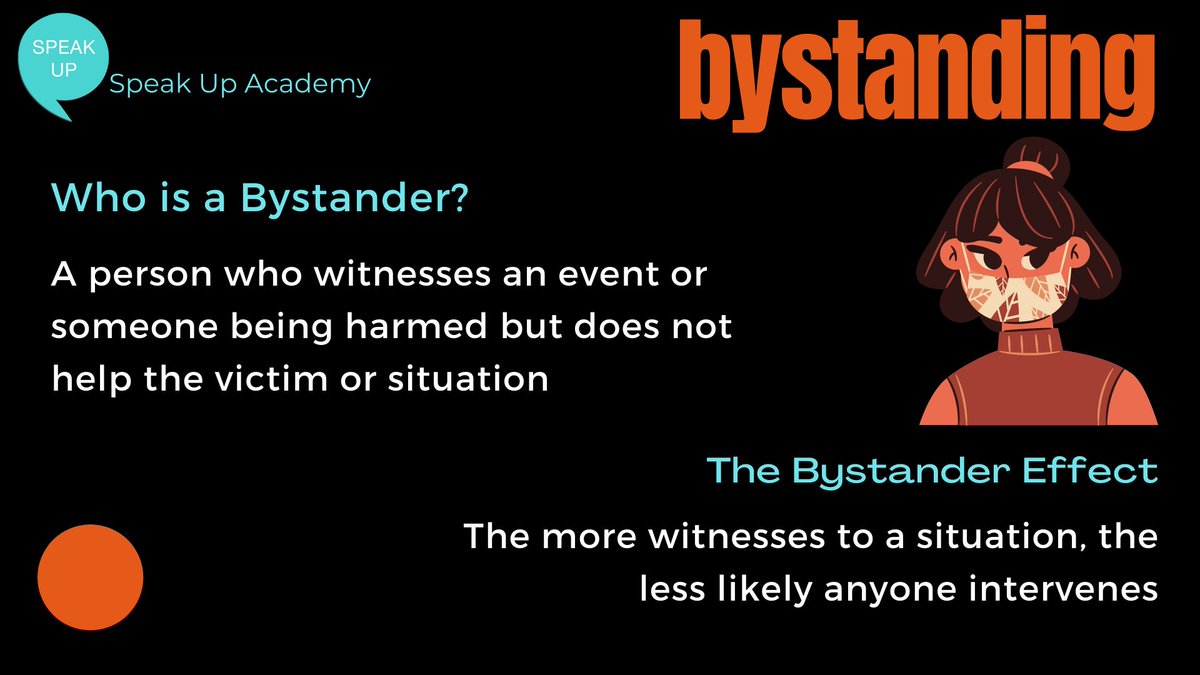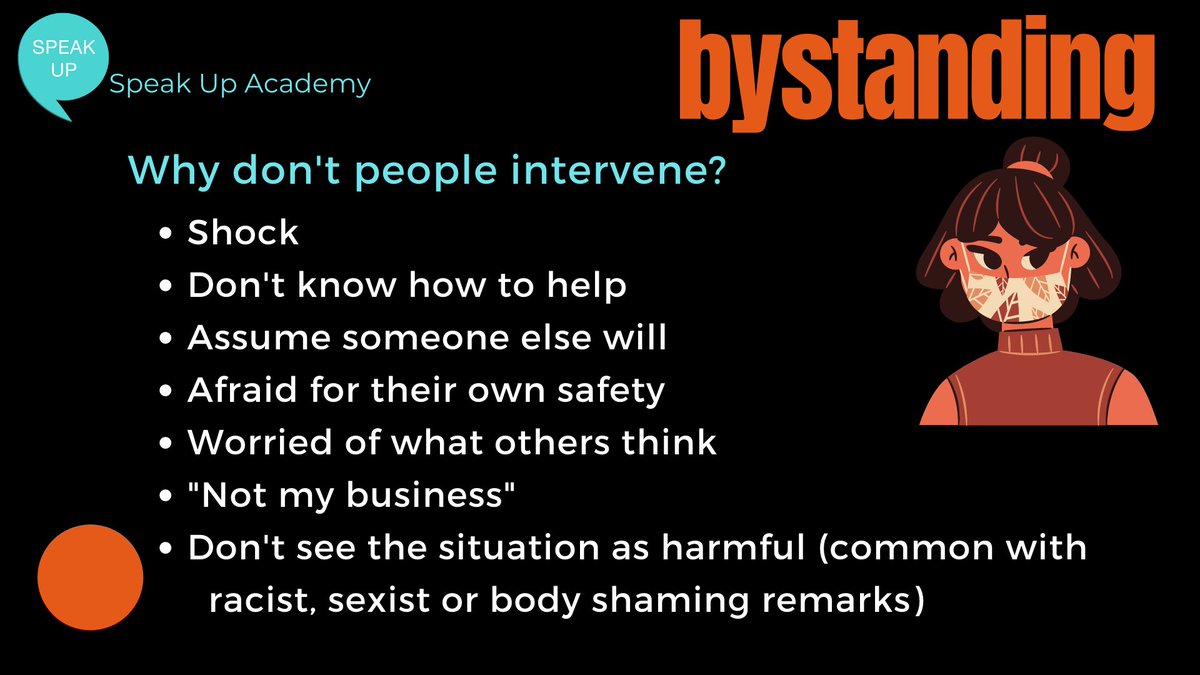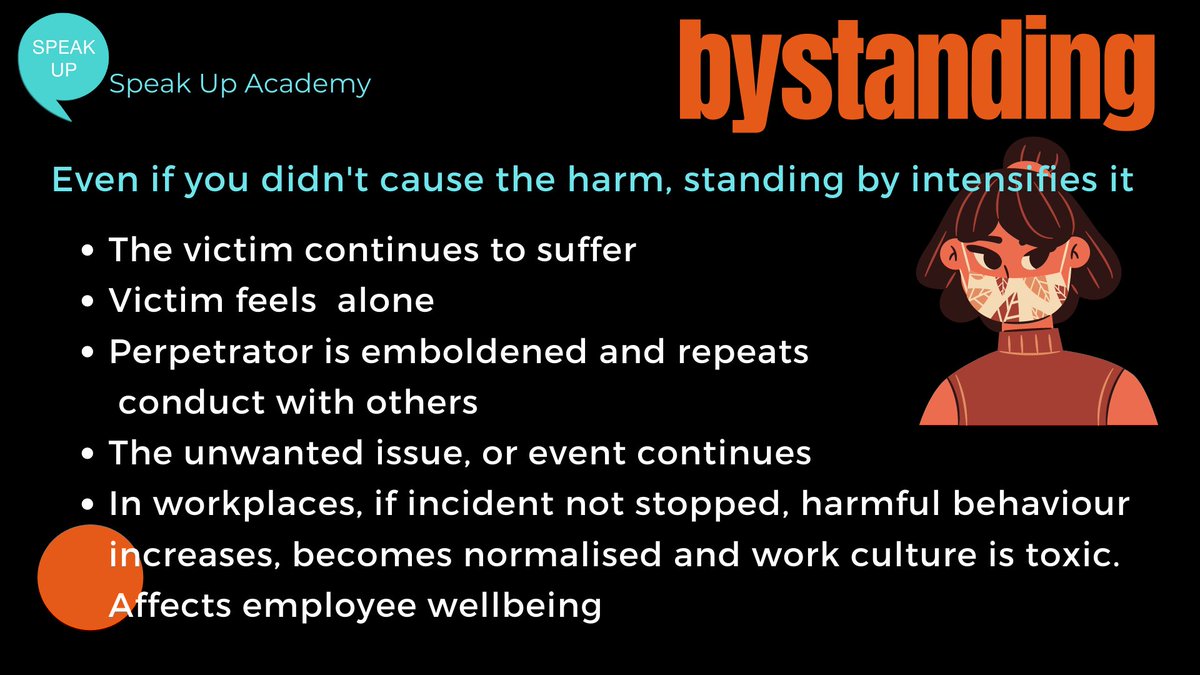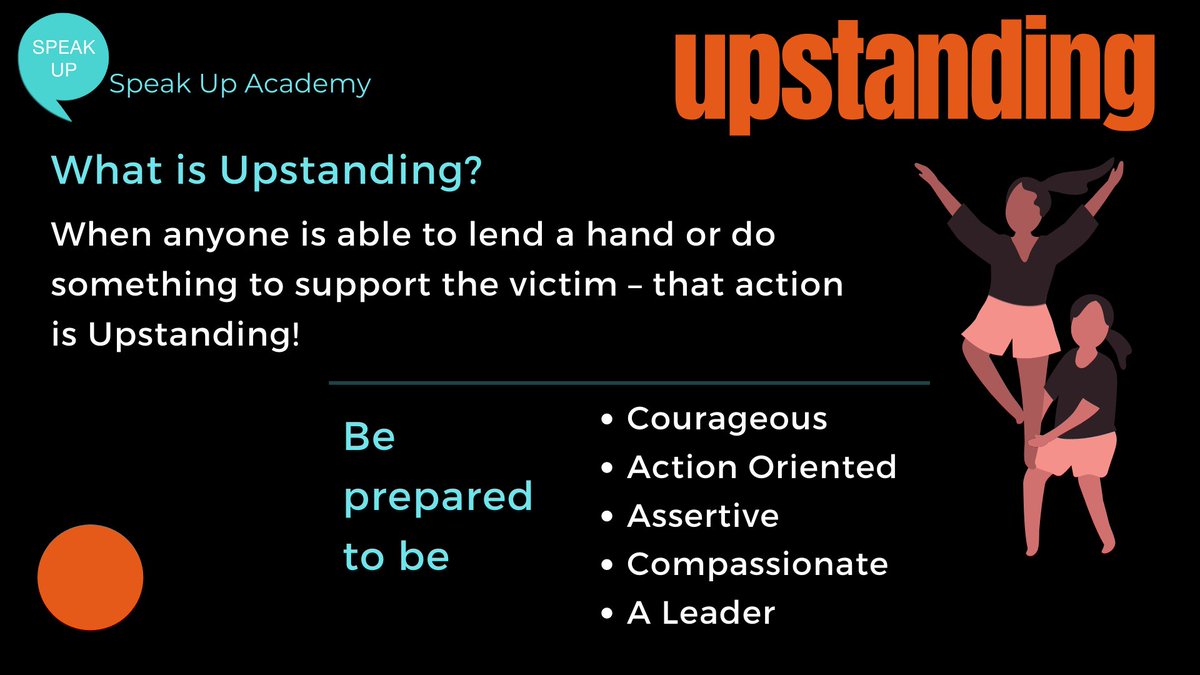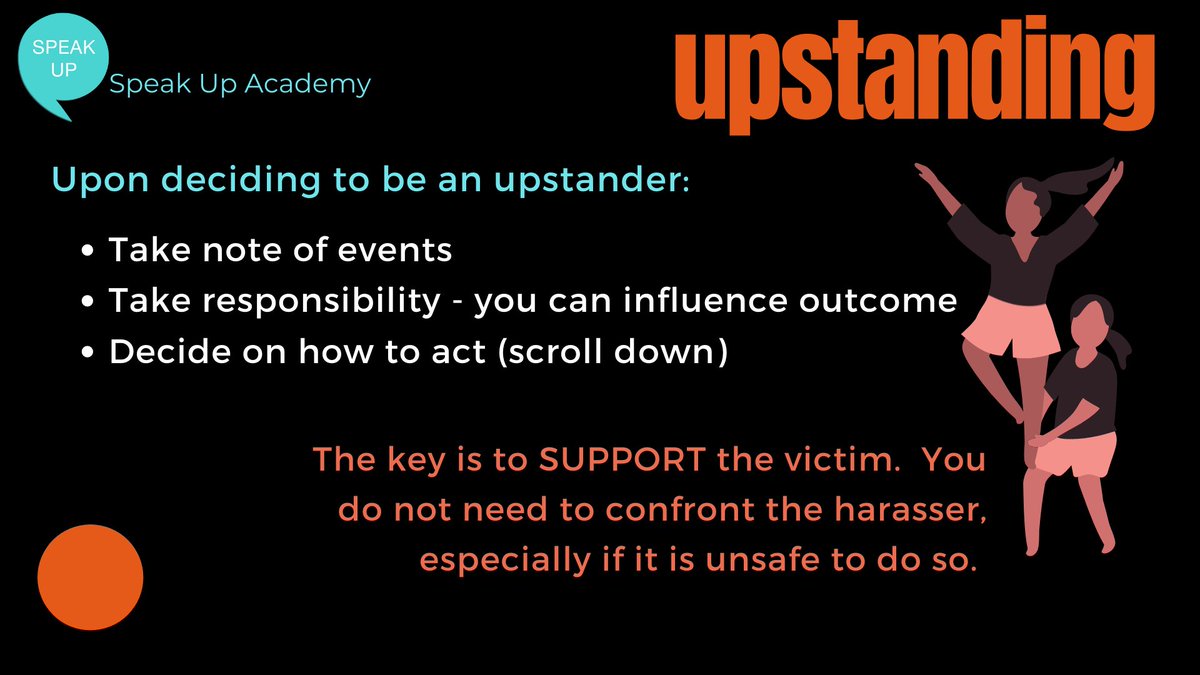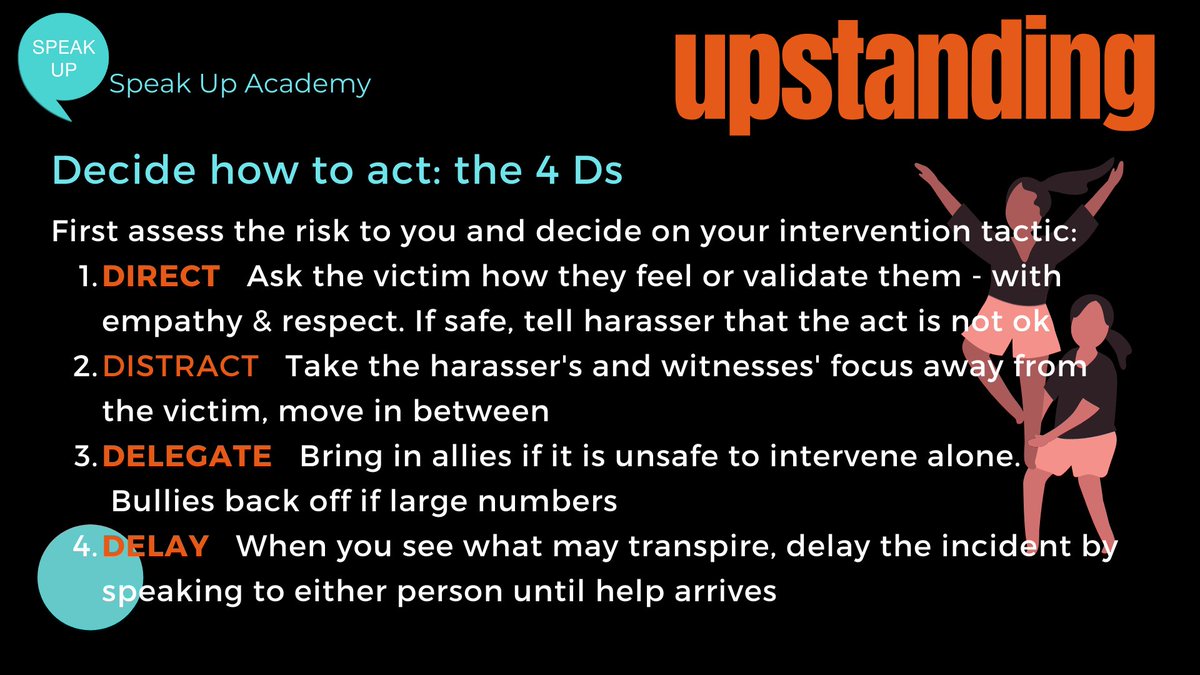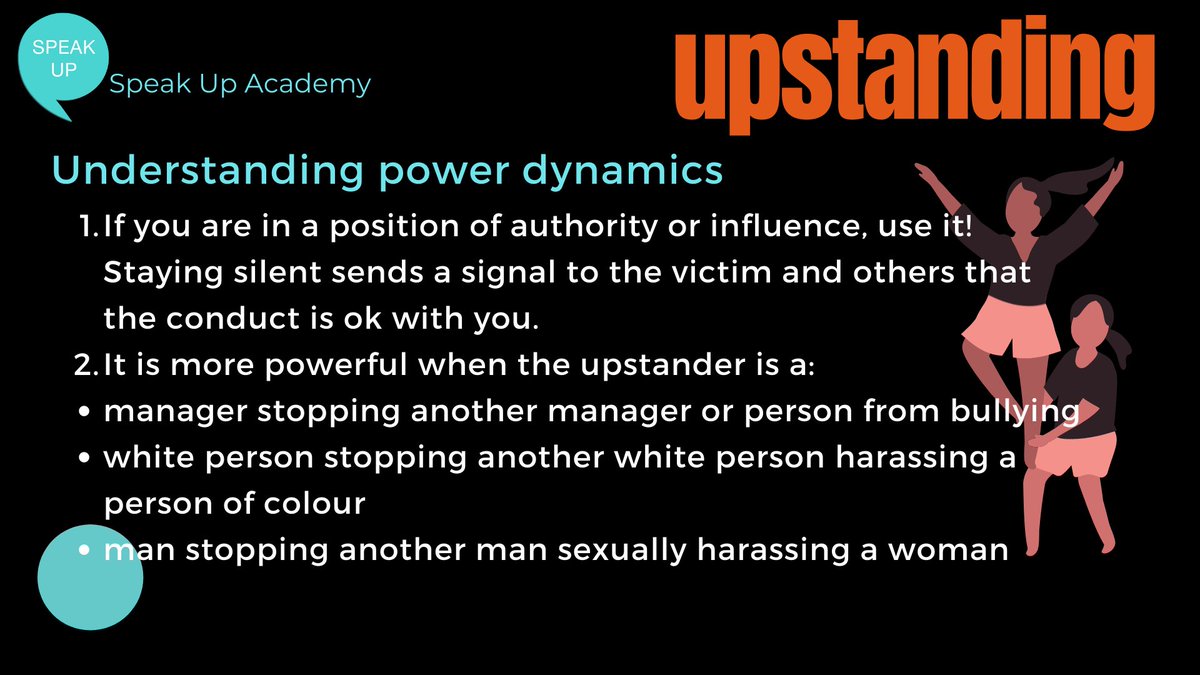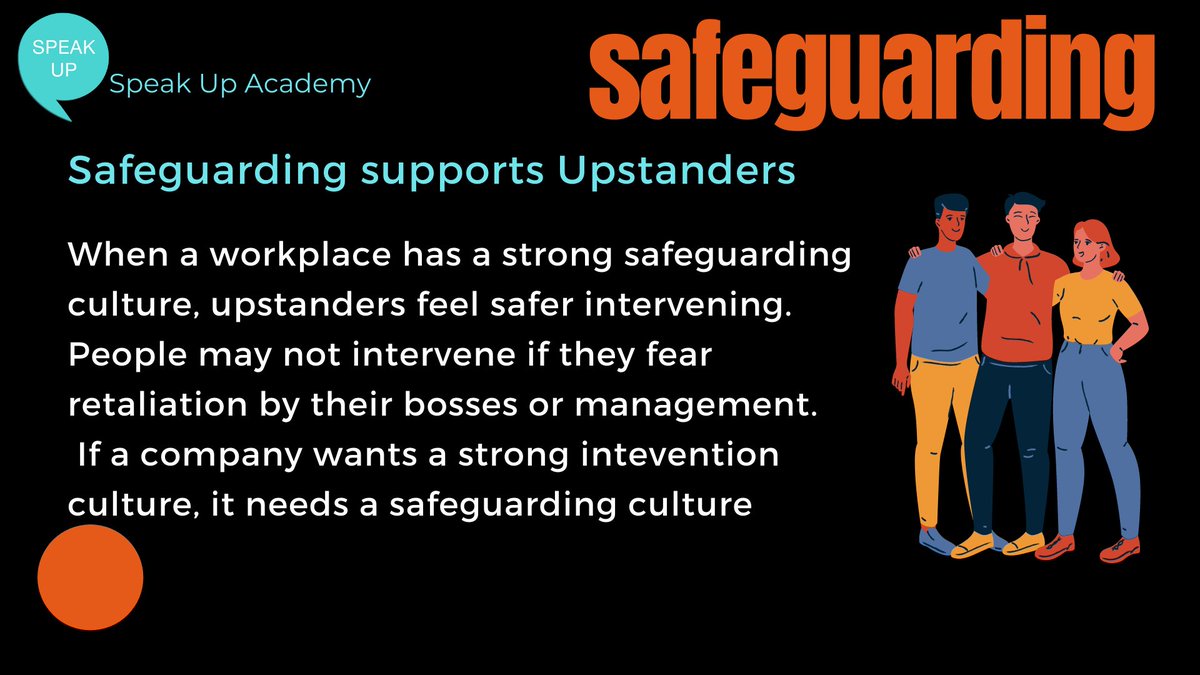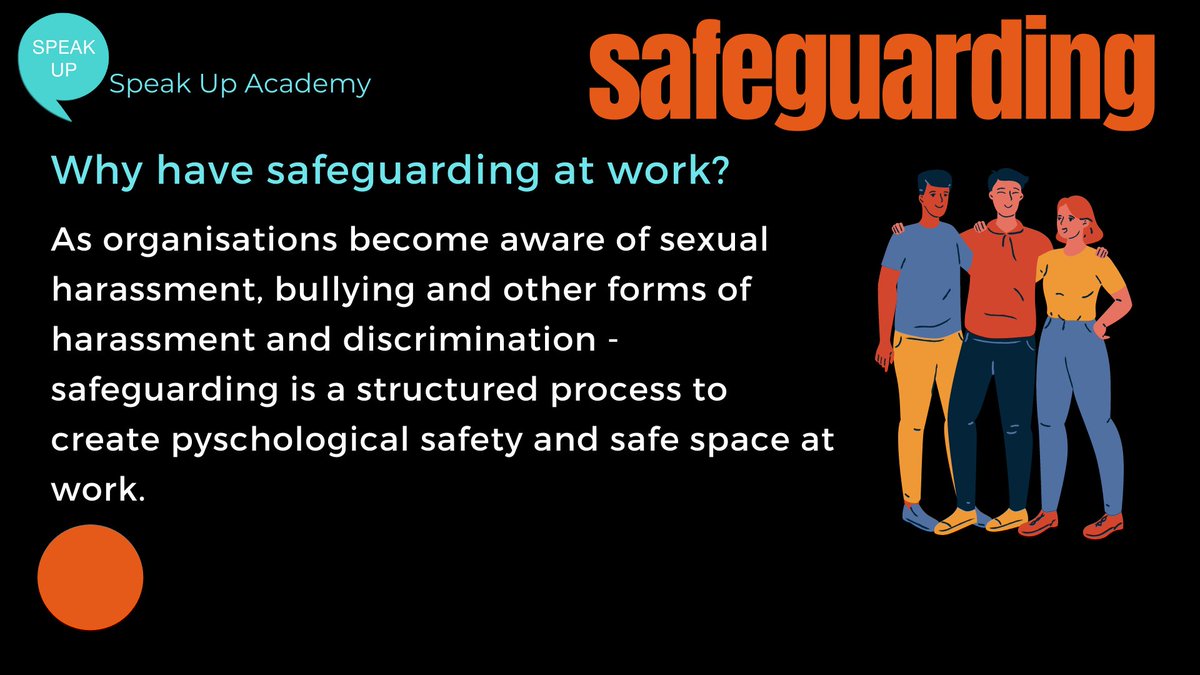Did you know that the more bystanders to an incident, the less likely anyone will intervene - the Bystander Effect.
Yet when we don& #39;t intervene, the victim feels worse. I& #39;ve spoken to people who were harassed who said, if only someone just came forward and asked if I were ok, it would have made all the difference.
It& #39;s time we moved from Bystander to Upstander, but how? Is it safe?
Upstanding is all about standing up for the victim/target and supporting them. You don& #39;t need to confront the harasser or seek to de-escalate. You& #39;re not trying to punish/educate the harasser or mediate. You& #39;re supporting someone who is being harmed.
How do you intervene? Betty Yeoh explains in more detail in our video: the 4Ds: Direct, Distract, Delegate and Delay
Power dynamics is real. If you are male, white or senior in an organisation, your intervention sends a strong signal. If you don& #39;t intervene, you condone the conduct. For example, women who call out sexual harassment are tired of doing all the heavy lifting
Employers can make a big difference by creating a safeguarding culture which encourages upstanding. Upstanders need to know they will be backed by management.
You can download all these slides here: https://www.slideshare.net/AnimahKosai/how-to-be-an-upstander">https://www.slideshare.net/AnimahKos...
Watch the webinar here - where Betty Yeoh and I discuss Bystanding, Upstanding and Safeguarding. https://vimeo.com/460811454 ">https://vimeo.com/460811454...
To my fellow Upstanders, Please do share this thread @rogerkline @deebasyed @ladymissazira @RemakingManhood @IMMikhailHafiz @michaelkasdan @RichardBistrong @MichelleYesudas @LittleJanhere @BullyingAlberta @JaniceGIlliganW @DrUmeshPrabhu @emelliashariff

 Read on Twitter
Read on Twitter